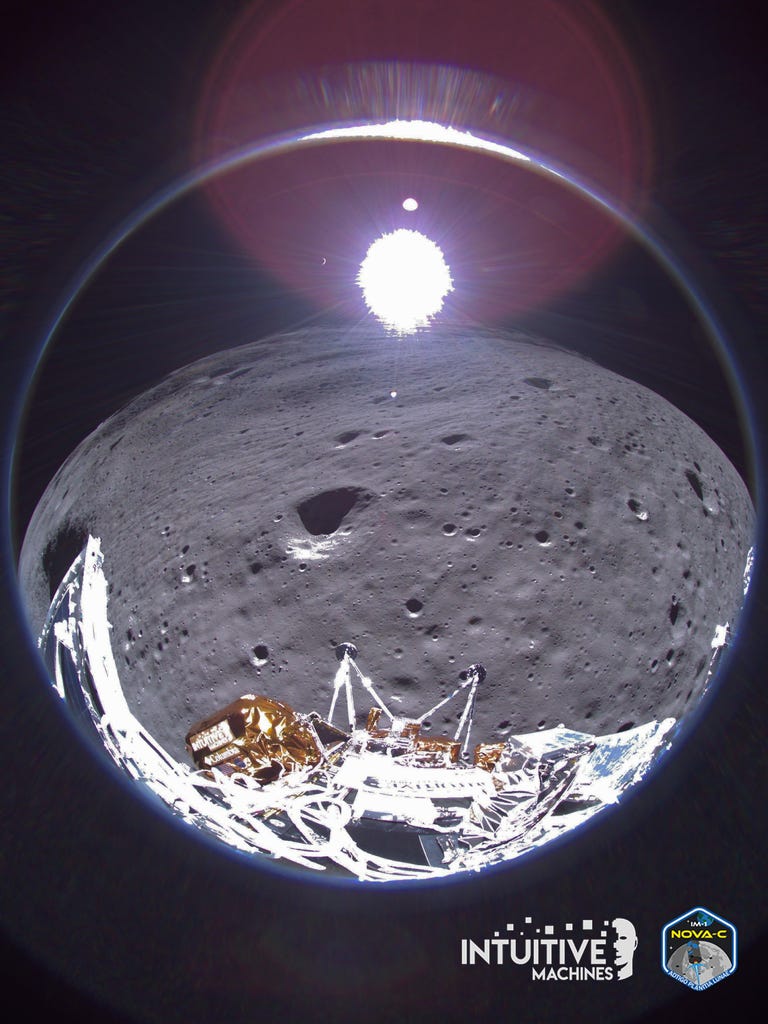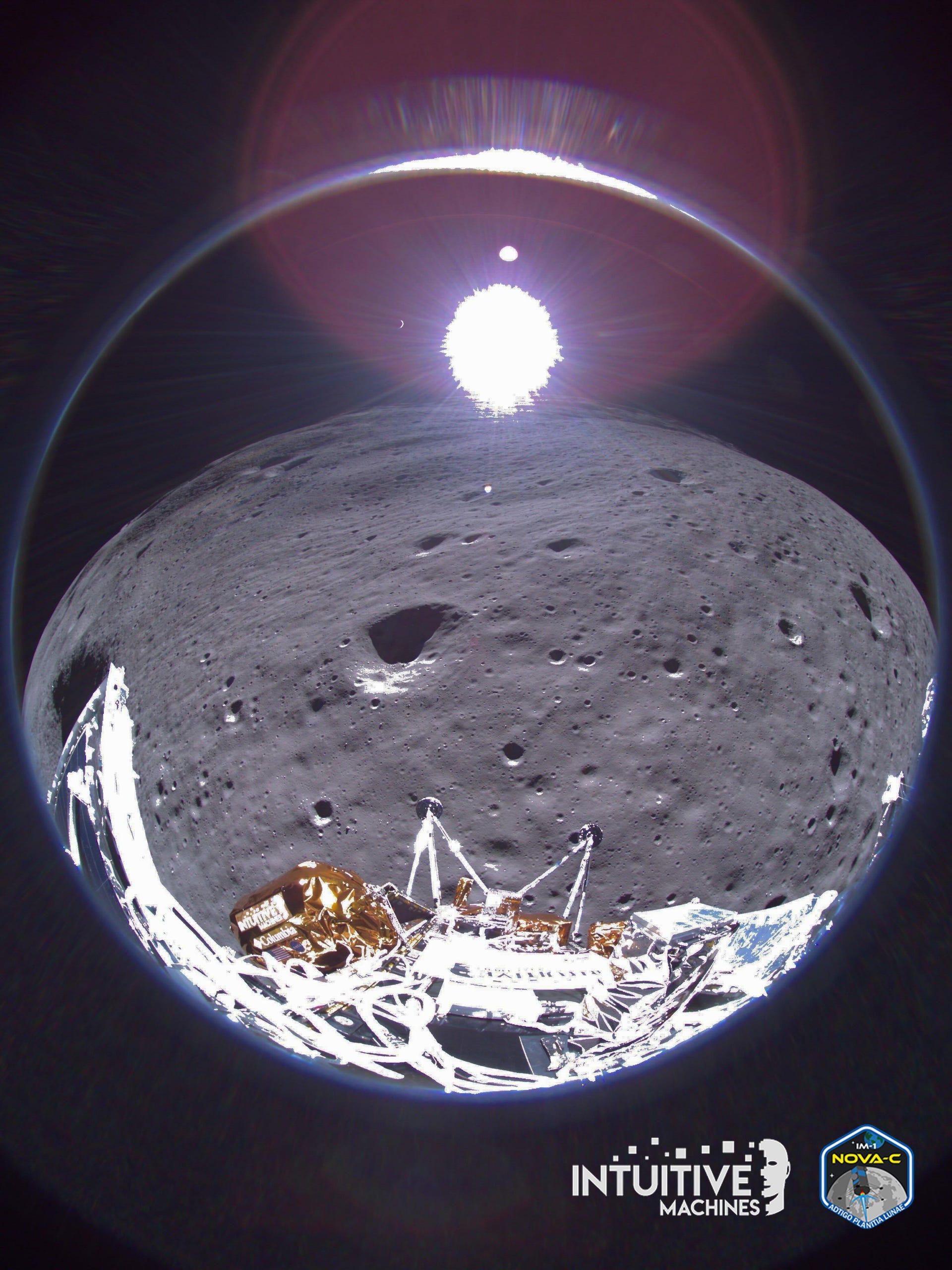Goodbye, Odie. On Thursday, Houston-based space-exploration company Intuitive Machines bade farewell to Odysseus, the lunar lander that took the US to the moon for the first time in more than 50 years. The lander had been there for a week and will remain on the moon’s surface, inoperable but remembered as a historic achievement in the annals of lunar exploration.
“Before its power was depleted, Odysseus completed a fitting farewell transmission,” the company wrote in a tweet shared on Thursday. “Received today, this image from February 22nd showcases the crescent Earth in the backdrop, a subtle reminder of humanity’s presence in the universe. Goodnight, Odie. We hope to hear from you.”
<figure uuid="b5d270a8-ba64-4f2d-a2d8-3e7e13ec5646" size="small" float="right" image-caption="
The image tweeted out by Intuitive Machines. Look close and you can see the Earth. (Click to enlarge.)
” image-credit=”Intuitive Machines via X/Twitter” image-alt-text=”Fisheye image showing, at the bottom, part of the lander; in the middle, the lunar surface with its distinctive craters; and up top, a bright white circle against the darkness of space, with a small bright crescent to its left.” image-credit-url=”https://twitter.com/Int_Machines/status/1763336637432385813″ image-filename=”odies-farewell-image.jpg” image-date-created=”2024/03/02″ image-width=”3000″ image-height=”4000″ image-do-not-crop=”false” image-do-not-resize=”false” image-watermark=”false” lightbox=”enabled” edition=”us” class=”c-shortcodeImage u-clearfix c-shortcodeImage-small c-shortcodeImage-hasCaption c-shortcodeImage-pullRight”>

Enlarge Image
